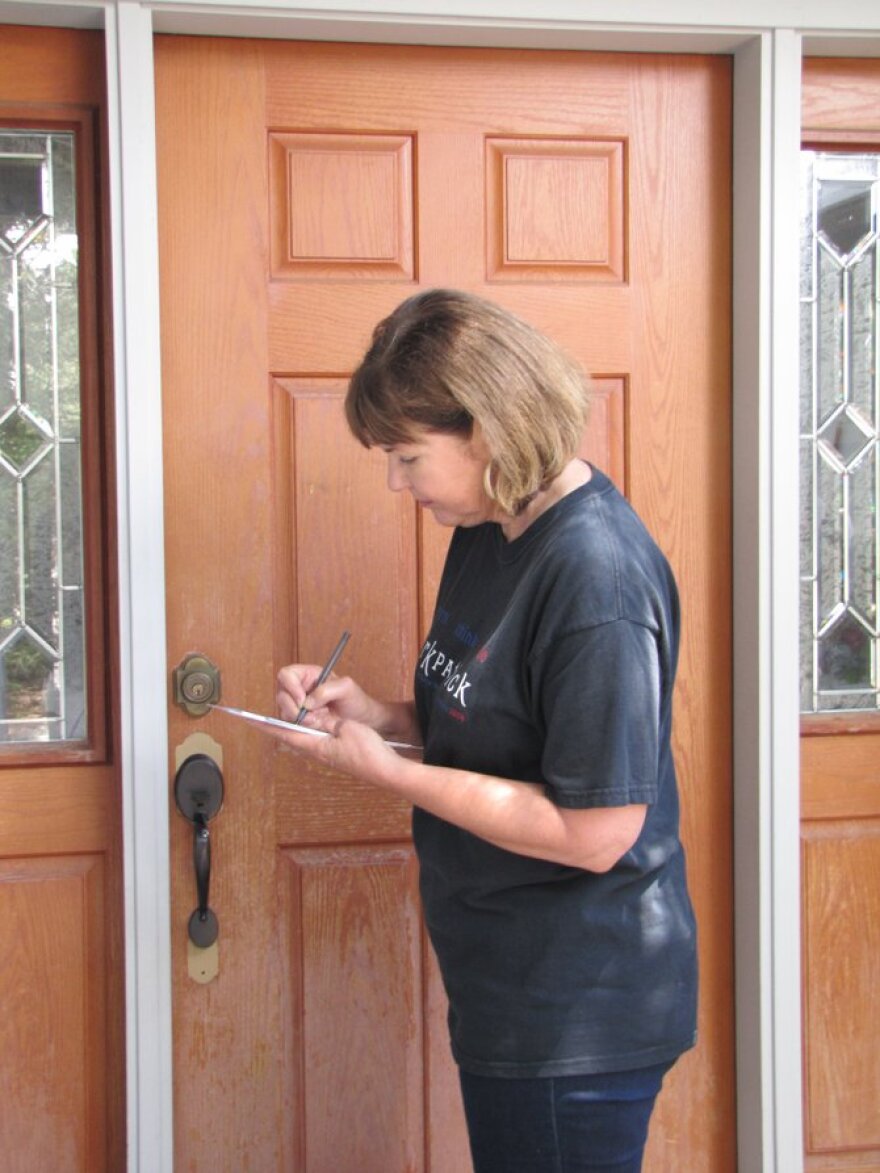Arizona’s newly drawn 1st Congressional District is the size of Pennsylvania. It’s the tenth largest in the nation, taking up almost two-thirds of the state, from the Arizona-Utah border all the way down the eastern half of the state to just north of Tucson. That makes it tricky for candidates to campaign.
Former Congresswoman Ann Kirkpatricks uses many tactics to get the word out this election.
"In this huge district it takes more of everything," Kirkpatrick said. "And by that I mean we have to have more campaign offices throughout the district. It means more mileage. It means driving constantly. It means more staff, more supplies, more campaign funds quite honestly."
And Kirkpatrick can afford it. So far she’s raised the most money of any of the 1st District candidates -- $1.4 million. Her opponent in the Democratic primary is Navajo candidate Wenona Benally Baldenegro. She has a small fraction of those funds, so is relying on name recognition among the tribes.
"When it comes to CD1, people want to have a representative they can identify with and who they know come from the small towns we all grew up in," Baldenegro said.
Benally is a common Navajo name. The tribe is the largest in the country. And Baldenegro is her husband’s name. His family is Latino. The district is 20 percent Latino and 20 percent Native American.
Last month, Baldenegro reached a small crowd of Navajo members at a hearing on a critical water settlement issue that’s been gripping Indian Country for decades.
"We should be able to come to the table and renegotiate these agreements and make sure as Navajo people we get our fair share of the resources that are being taken from us," she told them. "That’s ultimately all that we are asking for."
Baldenegro said this district needs someone who understands both tribal government and the federal government and how to bridge the gap.
But Fred Solop said that may not be enough. Solop, a political science professor at Northern Arizona University, said the pressure’s on. Many are watching the race closely.
"This is an important district nationwide largely because it’s an open congressional seat," Solop said. "It’s rare to have open congressional seats. It’s also important because the Democrats are looking at this as a district that the national pundits are saying leans Democratic. It’s an opportunity to move a congressional seat from the Republican column into the Democratic column."
There are more Democrats in the district than Republicans, but independents can push the vote either way.
Running on the Republican side, Jonathan Paton is dealing with the same challenges as his Democratic colleagues. He recently drove three hours from Phoenix to the small town of Camp Verde in northern Arizona for the Corn Festival, where he hoped to reach hundreds of constituents. He just moved to the district from Tucson, so few people know him.
The festival was a bust. Minutes before he arrived a thunderstorm with strong wind gusts blew over several canopies and blew away the crowd. Candidates in this enormous district can get frustrated, wasting an entire day trying to get votes.
"You go from the heat of the Sonoran Desert to worrying about elk in the White Mountains to dealing with GPS issues in some areas," Paton said.
Areas so remote that computer assisted directions are confusing or unavailable. Paton’s deputy campaign manager Robert Meyer said they try to multitask. When they’re not at an event like this one they’re on the phone, usually in the car. And when there’s no cell coverage ...
"We have travel Scrabble and all sorts of things to keep ourselves occupied in the meantime," Meyer said.
With her big campaign chest and congressional experience, Kirkpatrick is widely seen as the likely winner of this race, but she’s not taking anything for granted.



